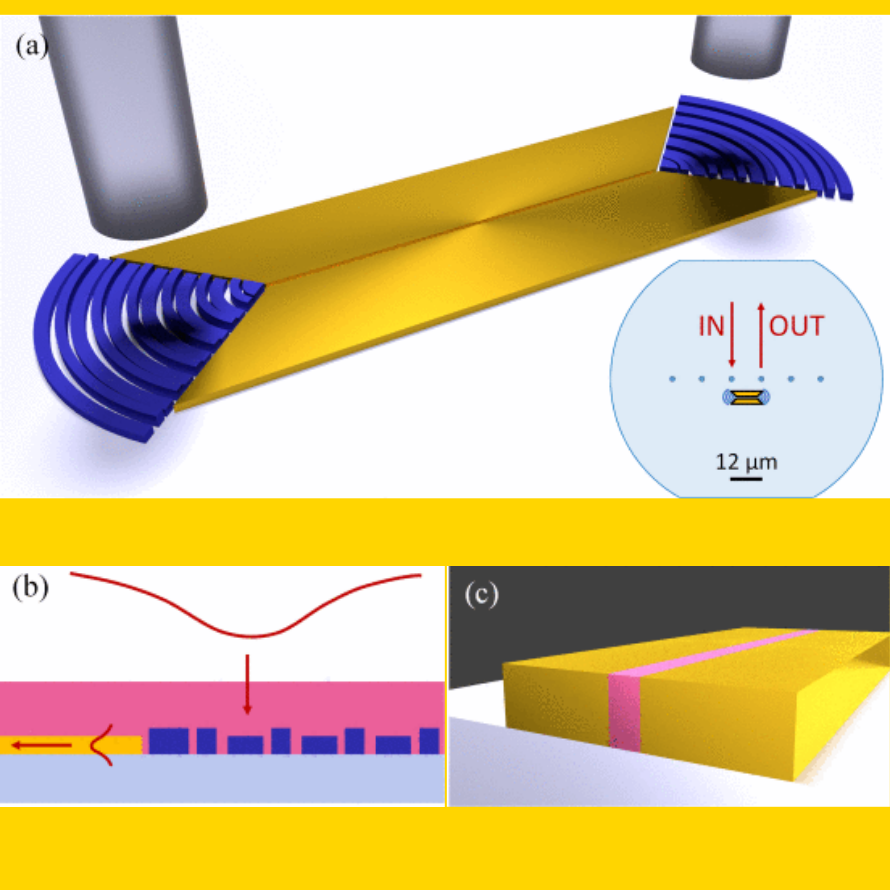Koch, Ueli, et al. “Ultra-compact terabit plasmonic modulator array.” Journal of Lightwave Technology 37.5 (2019): 1484-1491.
Ultra-Compact Terabit Plasmonic Modulator Array
Abstract:
A new plasmonic transmitter solution offering 0.8 Tbit/s on an ultra-compact 90 μm × 5.5 μm footprint is introduced. It comprises a densely arranged four-channel plasmonic phase modulator array that directly interconnects an optical fiber array. Each plasmonic modulator features high-index grating couplers-for direct and efficient conversion from a fiber mode to a plasmonic slot mode and vice versa-and a plasmonic waveguide-for efficient high-speed modulation. The individual devices achieve data rates of 200 Gbit/s with a symbol rate of 100 GBd.Electrical and optical crosstalk between neighboring modulators were found to have no significant influence on the data modulation experiment. The modulator array has been tested in a 100 GBd experiment with signals at a single wavelength (mimicking a space division multiplexing scheme) and at different wavelengths (mimicking a wavelength division multiplexing experiment).
Fig. 2. Plasmonic phase modulator concept for a single device. (a) 3-dimensional rendering of the plasmonic phase modulator consisting of high-index silicon grating couplers (dark blue), a gold plasmonic slot waveguide (gold) and the cores of an optical fiber array (grey). The inset shows the facet of the fiber array. Neighboring cores with a 12 µm pitch were used to couple light into and out of the modulator. (b) Cross-section along the device showing the grating coupler geometry and schematic of the vertically incident fiber mode that is converted to a horizontally propagating plasmonic mode. (c) Cross-section across the plasmonic slot waveguide which is filled by a nonlinear organic electro-optic material (purple). In this configuration, light and electrical signal are both confined to the plasmonic slot leading to strong field enhancement, high field overlap and therefore strongest light-matter interaction.
